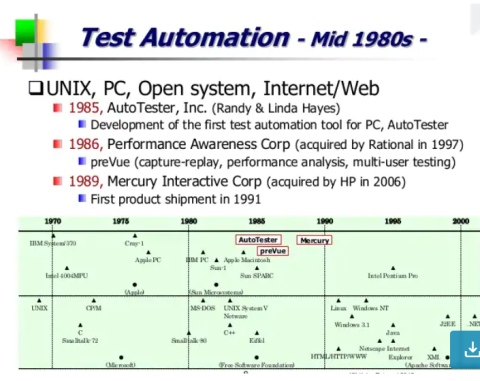While they did not become popular until the mid-2000s, full-code test automation frameworks (the likes of what the best options on the market tell us) really helped to change the game of software testing, by accelerating the testing process and therefore, production and time to market. There is a lot one can really do with technologies like these if their potential can be harnessed the right way.
But what does it take, or what does it mean to use them the right way?
Automation Frameworks: Costs vs. Benefits
No one will argue at this point what full-code automation frameworks can deliver or how well they do it. Once a test framework is properly set up and its test code intelligently written, it is as strong and reliable as a tank. But even tanks require servicing from time to time. So there is one thing that remains constant since the mid-1980s till today; in spite of all the ups and downs they have gone through, what used to be true for automation tools then, is still true for full-code automation frameworks in the present: test scripts need maintenance performed on them whenever the tested application codebase changes. This has a huge significance today, in a world where practically everything, from eCommerce stores to public services, depends on software to run.
Massive demand for goods, creates the need for faster delivery times, which at the same time causes teams to adopt tight deadlines on their projects, the kind of tense situation in which any error, no matter how small, can represent a truly quantifiable loss.
Added to this is the cost of staff training or hiring, because, let’s face it: creating well written test scripts is not something any person can do, and even being reasonably good at that, doing script maintenance is a painstaking and time consuming task; time that could much better be invested in testing per se.
AI and Test Automation: The Revolution Taking Place.
It is true what they say; Artificial Intelligence is pretty much all that. Machine Learning algorithms tailor web search results, movie suggestions, home page content in social media, etc, all according to the user likes, preferences and/or actions. We still seem to be not amazed enough at how Large Language Models (LLM) can read and (reasonably well) write poetry.
In sum, the power predict or “infer” possible states of an entity, as well as the ability to perceive changes at a visual or graphical level, are all benefits which Automation Testing tools have taken great advantage of.
Today, no-code Automation Testing tools –especially those based on AI– are helping testers to save a lot of time and effort in tasks that otherwise would take –most of the times– massive lines of code (and sleepless nights), like finding and defining element locators, even when the codebase is changed. Plus, applications or browser extensions for recording and playback are a real kicker in simplifying the way testers can create test scenarios or assertion steps for elements or their respective states on a user interface.
Not The End of The Road
But in spite of all these good news, AI, like coded automation tools –and basically all technologies–, still have things to perfect, and areas to explore.
This is beyond the fact that machines can not think like a human being. It’s more like, machines are conceived and designed to do specific things, and, desirably, to do them well, fast and in a constant pace; in contrast to the randomness that human error adds, which is often necessary to come up with, for example, interesting or unpredictable test case scenarios, steps or ways to reproduce an error, etc.
Artificial Intelligence as a research field is undoubtedly pointing and heading towards that goal: machines that can reason, machines able to make conscious decisions, likely how a human being would proceed.
In the coming years, new discoveries made sub-fields like Machine Learning, Deep Learning and Convolutional Neural Networks will probably yield their fruit and give birth to the new thinking machines.
On the Edge of Tech: Autify Delivers Quality
Even though we are still not there, living that promising future which lies within imagination, hope and certainty, there are for sure important milestones reached so far; and Autify is certainly aware of that, being a contributor in making that future possible.
By improving and adding to the already existing features of its platform, Autify maintains the clear vision: helping QA teams make the best of their resources, accelerating training phases, while giving non-programmers the opportunity to participate in the tech industry, directly involved in the development process of a product.
Autify simplifies the test case process creation, leaving free space for the tester’s ingenuity to generate better, more creative test scenarios and test cases, leaving the hassle of dealing with codebase changes and test maintenance to the very core of the system, making testing the motor of the whole development process.
With its latest additions, like Step Suggestions, Autify demonstrates how it is pushing the envelope in harnessing the power of Artificial Intelligence, without leaving aside the fact that people very often like to get their hands dirty, and there are indeed testers who are familiarized with programming and can actually code; that is why Autify’s JS Steps and JS Snippets are a very important part of the whole Autify application, which extends the capabilities and the possibilities of it.
Conclusion
The future is nigh, because it is always ahead, and so, ahead is the way to go. And that means, overcoming limitations, finding new ways of solving old problems –while dealing with the new– and reinventing oneself.
Autify embraces that philosophy and encourages the new generations of QA testers to be part in building that future; a future in which automation is no longer a thing to be doubted about because of the difficulties (and costs) it might represent.
Autify is for you if:
- The development team wants to run tests first.
- The QA team tests multiple products across the board.
- The QA team is short staffed.
- Test automation seems too difficult.
- You have struggled with test automation before.
- You haven’t got around to maintaining test codes.
Start improving your development process with test automation. Sign up for a 14-day free trial or talk to our experts to learn more!


